Marie-Madeleine Pioche de La Vergne, Comtesse de La Fayette
Marie-Madeleine Pioche de La Vergne better known as Madame de La Fayette, was the author of France’s first first historical novel La Princesse de Clèves. It was so successful that people outside of Paris had to wait months in order to get their hands on a copy, if they managed at all.
 Marie-Madeleine was born on 18 March 1634, into a family of minor nobility with close ties to Cardinal de Richelieu. Her father, Marc Pioche, came from a bourgeois background and to hide that a bit, he started to style himself de La Vergne. This Monsieur Pioche de La Vergne was a rather smart man, he opted for a military career and learned all about fortress construction. He married in 1619 and became the tutor of a nephew of Père Joseph, who was one of the most important people in the Kingdom and the right hand of Cardinal de Richelieu, the following year.
Marie-Madeleine was born on 18 March 1634, into a family of minor nobility with close ties to Cardinal de Richelieu. Her father, Marc Pioche, came from a bourgeois background and to hide that a bit, he started to style himself de La Vergne. This Monsieur Pioche de La Vergne was a rather smart man, he opted for a military career and learned all about fortress construction. He married in 1619 and became the tutor of a nephew of Père Joseph, who was one of the most important people in the Kingdom and the right hand of Cardinal de Richelieu, the following year.
He did his tutor-job very well, but it did not last. His pupil died young, only two years later. Monsieur Pioche de La Vergne returned to the military, lost his young wife and bemoaned her demise… also that she had not given him any children. By 1630, Cardinal de Richelieu remembered Monsieur Pioche de La Vergne made a good tutor back in the days and hired him as tutor for one of his nephews, Jean-Armand de Maille-Breze. The Cardinal had just built himself a splendid Palais close to the Louvre, which was frequented by all sorts of important people. Monsieur Pioche de La Vergne started to make a name for himself and ran into the beautiful daughter, Mademoiselle Isabelle Péna, of a physician in service of the King. He married her in 1633 and Marie-Madeleine was their first of three daughters.
Thanks to her father’s good connections at court and his close proximity to Richelieu, the family gained entrance to the important Parisian salons. One year after the birth of Marie-Madeleine, the family moved into a brand new house, and started to host gatherings for the Parisian elite from time to time. Monsieur Pioche de La Vergne died as Marie-Madeleine was fifteen years old, in 1649, and to the surprise of many, her mother married again rather quickly, in 1650. Marie-Madeleine’s new step-papa was Renaud de Sévigné, called Chevalier de Sévigné, who was the uncle of Henri de Sévigné… and this Henri de Sévigné was the husband of the then already quite famous Marie de Rabutin-Chantal aka Madame de Sévigné.
Marie-Madeleine actually thought that she would be the one to marry the Chevalier de Sévigné, so the whole thing took her quite by surprise too. Either way, being related to Madame de Sévigné would open doors in the future. The same year, Marie-Madeleine entered court, thanks to her godmother, the Duchesse d’Aiguillon, putting in a good word for her, as demoiselle d’honneur to Anne d’Autriche, a great honour. She also met Gilles Ménage, a famous scholar, who taught her Latin, Italian, many things about literature and introduced her to the salons of Catherine de Rambouillet, Suzanne du Plessis-Bellière and Madeleine de Scudéry. The very places to be.

The bright mind and talent of Marie-Madeleine was of course quickly noticed by these ladies-of-quality and Marie-Madeleine was admired by many…. but then the Fronde happened. The Chevalier de Sévigné was quite anti-Mazarin and gathered people around himself, who thought the same.
The family home became a meeting point for Frondeurs and that did not go unnoticed either. As royal order was established again, the Chevalier and the rest of the family were banished from court to Anjou. Madame de Sévigné, who was by now widowed, was exiled as well for being close to the anti-Mazarin Gondis. It was a true disaster for Marie-Madeleine. She was smart, witty, beautiful… but this exile meant that her chances for a good marriage, which could lift the whole family in rank, were close to zero now, especially since the family did not really have money either.
Years passed without a good marriage in sight. In the end, the fondness Louise de La Fayette, who was once a confident of Louis XIII and now lived as nun in a Parisian convent, had for Marie-Madeleine lead to marriage prospect. Louise was of very noble blood, for her mother was from an illegitimate branch of the royal house, and had a penniless widowed brother. She suggested that Marie-Madeleine should marry her brother, although he was quite her senior…. but he was also a Comte….
The matter was considered, also the dowry, which was quite the sum. Isabelle Péna was all for it and decided the marriage should go ahead, even-though it meant convent for her two younger daughters, because this was the only way to afford the dowry for the oldest. The marriage took place in 1655, with the bride being twenty-one years old and the groom, François Motier de La Fayette, thirty-eight.
The new Comtesse de La Fayette followed her hubby to live in the country, to the Auvergne and Bourbonnais. During her first visit to the country, the pregnant Comtesse suffered a miscarriage. Thinking that Paris was saver for childbirth, Marie-Madeleine returned to the capital towards the end of her second pregnancy, in 1658, and gave birth to a healthy son. She was soon pregnant again and had by then made her mind up to stay in Paris, in the house her parents built and which she had inherited from her mother. Her second child, another son, was born there in 1659.
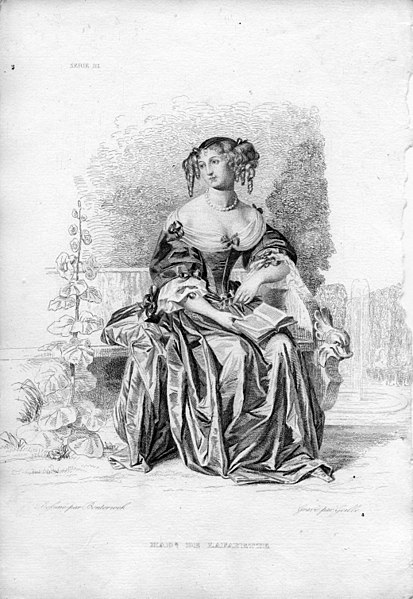
Paris was just not more comfortable compared to the country, it also allowed her to wage war against her husband’s many creditors, while he tried to get their country estates in order. In first, the Comtesse relied on the help of her old friend and admirer, Monsieur Ménage, but with her settling permanently in Paris, the Comtesse took the matter in her own hands. It were the early 1660’s, the time where Louis XIV truly began to shine as a King and the young faces started to replace the old ones. Marie-Madeleine returned to the salons and her good friend Madame de Sévigné, befriended the influential Nicolas Fouquet and the soon-to-be sister-in-law of the King, Henriette d’Angleterre.
Inspired by the world of the salons, with its very romantic opinions on love and duty, Madame de La Fayette took to the quill in 1661. It was not her first attempt at writing. In 1659, a written portrait of Madame de Sévigné was published in a collection. But now, the Comtesse took to writing a novella. The finished work received the title La Princesse de Montpensier and was published anonymously in 1662.
Apparently, the novella was published anonymously, because the Comtesse thought it was beneath someone of her rank to engage in the writing of stories. A second novella, called La Comtesse de Tende, was written around the same time, but not published in 1724. Both novellas circle around marriages of convenience and the disastrous consequences, for the wives, as they give in to their hearts and ogle someone who is not their husband.
A topic she would return to some years later… but for now, Madame de La Fayette put the quill down again. She successfully fought the hubby’s creditors again instead and it actually brought her joy, thus she started to advice friends during their juristic troubles. The year 1661, brought the Comtesse an official position at court again. She was made dame d’honneur to Henriette d’Angleterre. As such, she often attended various court events at the side of Madame.
Madame de La Fayette picked the quill back up in 1668 to write, together with he poet Jean Regnault de Segrais, a story set in 9th century Spain. It was published under the name Zayde, with Monsieur de Segrais listed as the author, in two volumes in 1670 and 1671. At the same time, Madame asked the Comtesse to write her biography and the Comtesse happily agreed… the work was started, but remained unfinished after the sudden and early death of Madame. It was published in 1720 under the title Histoire d’Henriette d’Angleterre.
 With the demise of Madame, there was no need for dames d’honneur anymore. Thus Madame de Lafayette had plenty free time now. It is a little unclear what her hubby was up to the whole time, he seems to have been so discreet about everything, there is hardly a mention of him. The Comtesse sat back down with her trusted quill some-when in 1672 to start to work on her masterpiece…. like most authors she probably never thought that what she was putting down on the parchment would be a success. (In my case, I still can not quite believe that people actually read what I write.)
With the demise of Madame, there was no need for dames d’honneur anymore. Thus Madame de Lafayette had plenty free time now. It is a little unclear what her hubby was up to the whole time, he seems to have been so discreet about everything, there is hardly a mention of him. The Comtesse sat back down with her trusted quill some-when in 1672 to start to work on her masterpiece…. like most authors she probably never thought that what she was putting down on the parchment would be a success. (In my case, I still can not quite believe that people actually read what I write.)
This masterpiece, La Princesse de Clèves, is a short novel set during the times of Henri II. The plot circles around a young and beautiful girl, Mademoiselle de Chartres, who has been sheltered by her mother and does not know much about court, intrigues or love… Mademoiselle de Chartres, at the age of sixteen, ought to be married and for that, mother and daughter travel to court. In first, everyone admirers Mademoiselle de Chartres and there are plenty of fabulous marriage prospects… but then people start, out of jealousy, to talk unfavourably about Mademoiselle de Chartres and suddenly all the good candidates withdraw.
Mademoiselle follows the advise of her mother to marry the best remaining candidate and becomes the Princesse de Clèves. Shortly after their wedding, the Princesse meets the very dashing and very handsome Duc de Nemours. She falls in love with him, he falls in love with her. Hurray, one would think, but not in this case. Both love each other, but do not act upon their feelings. Their whole romance is seeking each others presence without seeking each others presence and seeking eye contact without seeking eye contact… because under no circumstance it can be known that the two love each other. As the handsome Duc becomes involved in a scandal, the Princesse has reason to think he has been unfaithful to her… the matter is solved in the end, but makes the Prince realise that his wife loves someone else. She confesses it and he goes on a mission to find out who the gentleman is. He find out and is sure that, although his wife never has bodily-contact with the Duc, she must have cheated on him. The Prince falls ill shortly after and kind of blames the Duc for it, begging his wife not to marry him. After the death of the Prince, the widowed Princesse ponders what to do. In the end, she decides not to marry the Duc or have an affair with him, but to stay true to her death husband…. (If you haven’t read it, I recommend you to do it. It is quite the story, with lots of details, and will def leave you wondering what you would have done in her place… You can get a bundle of all three novels here.)
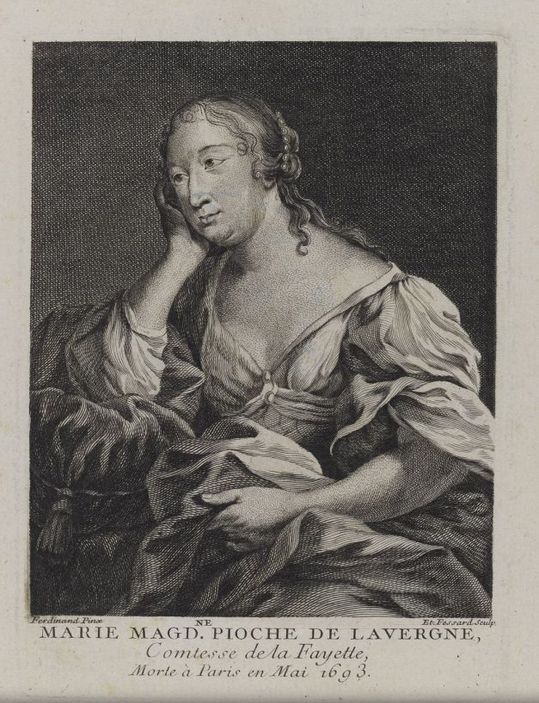 La Princesse de Clèves was published in 1678 and a huge success. Everyone wanted to read it and those lucky enough to be in possession of a rare copy, suddenly found themselves with a horde of new friends who all wanted to borrow it. It also led to plenty of discussions regarding the decision of the Princesse and whether a woman should admit to her husband to love someone else or keep it a secret. Or if it was wise that the Princesse did not marry the Duc and instead opted for a life as widow for the sake of her salvation…
La Princesse de Clèves was published in 1678 and a huge success. Everyone wanted to read it and those lucky enough to be in possession of a rare copy, suddenly found themselves with a horde of new friends who all wanted to borrow it. It also led to plenty of discussions regarding the decision of the Princesse and whether a woman should admit to her husband to love someone else or keep it a secret. Or if it was wise that the Princesse did not marry the Duc and instead opted for a life as widow for the sake of her salvation…
The Comtesse lost her closest friend, the Duc de La Rochefoucauld, in 1680 and her husband in 1683. She was still living in the Parisian house her parents built and had by then a certain amount of wealth at her disposal. Louis XIV always looked kindly upon the Comtesse and she was always welcome at court… but Madame de La Fayette, at the start of the 1680’s, started to feel unwell quite often. She started to turn towards her sons and their futures. The oldest, named Louis, had decided for a live as monk and the Comtesse arranged for him to become and Abbé. The youngest, Armand-Renaud, had decided for a military career and became an officer. His mother helped him to an own regiment and a fine bride.
Madame de Lafayette took to writing again in 1688. She started to work on a chronology of the court at Versailles of the years 1688 and 1689. It was published in 1720 under the title Mémoires de la cour de France pour les années 1688 et 1689. Marie- Madeleine felt more and more unwell towards the end of the 1680’s and died on 25 May 1693, a proud grand-mère by then, at the age of fifty-nine.
Her youngest son followed her to the grave the next year. He fell ill, while at Landau with his regiment, and died.
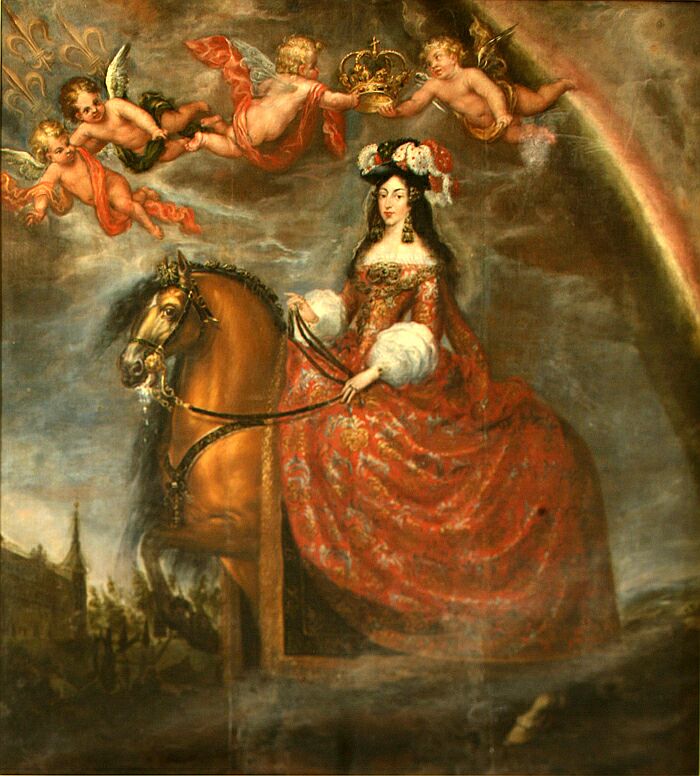

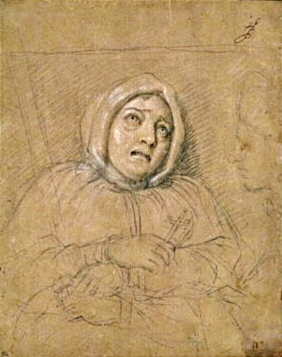
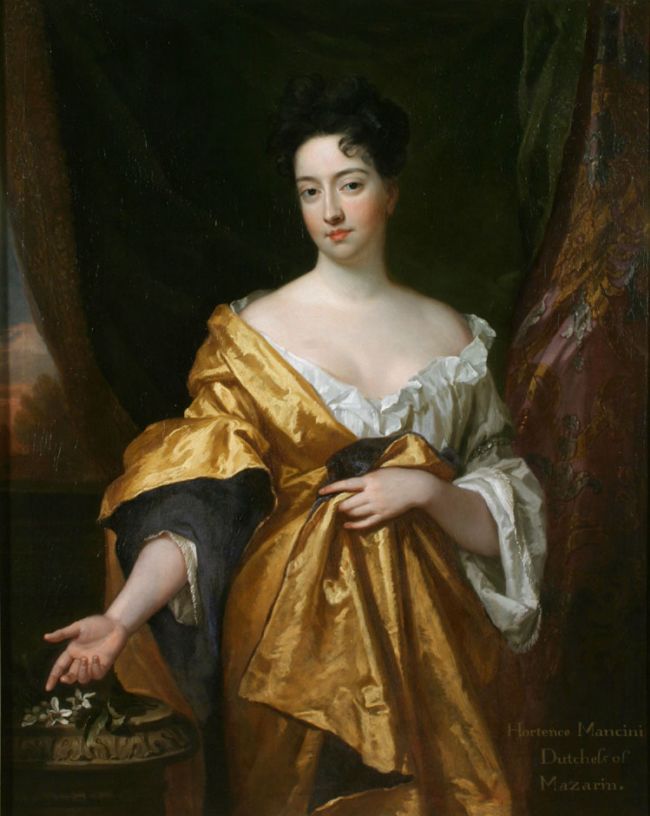

2 Comments
Tess
Psst Aurora, I have to say that, in my case, I can not quite believe you still doubt in your readers… 😉
Aurora von Goeth
Not my readers, just my abilities and those I doubt every day.